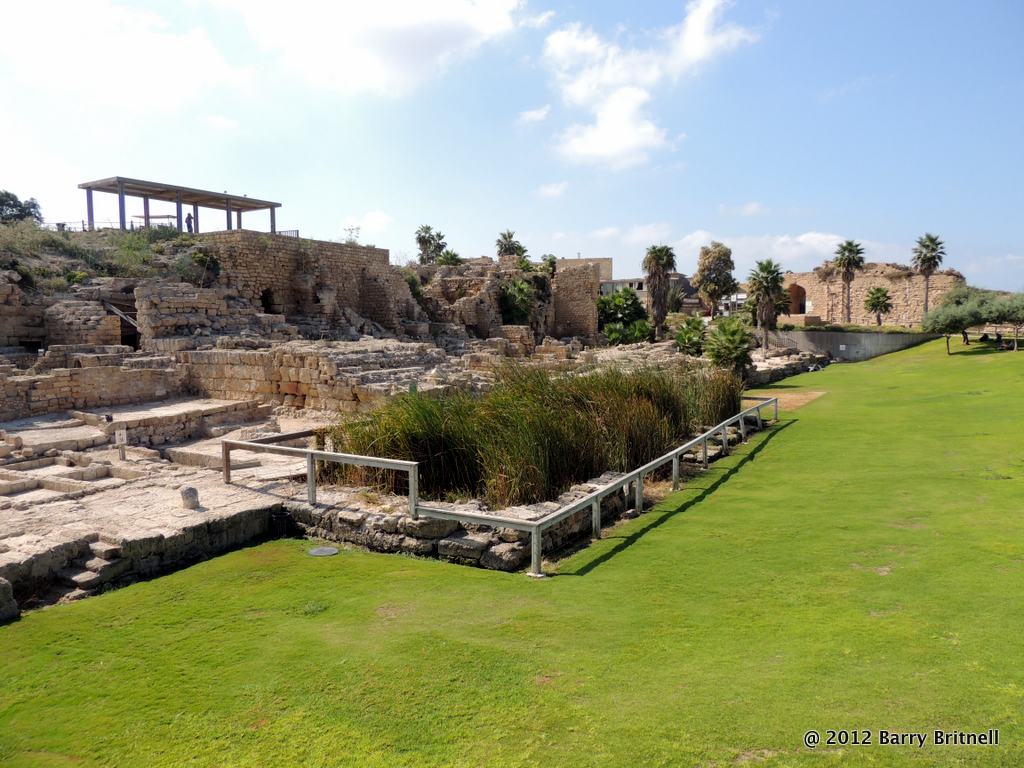Today I'm continuing the series of favorite pictures that I took while on my trip to Israel in September. Today's picture is of the remains of the inner harbor at Caesarea Maritima.
Between 22-9 BC, Herod the Great constructed a huge harbor in the coastal, Roman administrative city of Caesarea. When it was built, it was the largest artificial harbor built in the open sea, enclosing around 100,000 square meters. It consisted to two parts, and outer harbor and an inner harbor. The inner harbor was for smaller boats, which granted passengers transportation to the larger boats in the outer harbor.
 The picture that I have attached is of the smaller, inner harbor. For centuries, this entire area was covered in dirt and has only recently been excavated. The grassy area is where the water would have been during the first century. On top of the large platform to the left is where Herod built one of the three large temples which he dedicated to Caesar Augustus. (The other two are in the region of Caesarea Philippi and Samaria.) You can imagine the travelers at that time coming into the harbor and looking up at that large temple just before they disembarked. If you look closely where the stones and grass meet, you can still see the steps that travelers would have used to get on and off the boats.
The picture that I have attached is of the smaller, inner harbor. For centuries, this entire area was covered in dirt and has only recently been excavated. The grassy area is where the water would have been during the first century. On top of the large platform to the left is where Herod built one of the three large temples which he dedicated to Caesar Augustus. (The other two are in the region of Caesarea Philippi and Samaria.) You can imagine the travelers at that time coming into the harbor and looking up at that large temple just before they disembarked. If you look closely where the stones and grass meet, you can still see the steps that travelers would have used to get on and off the boats.
Looking at this picture, you can't help but think of all the people that probably walked along that harbor. This is the city where Cornelius lived (Acts 10). This is also the city where Philip lived (Acts 21). No doubt, both of them would have come down here during their lives. In addition, the Apostle Paul used this port a number of times in his travels. He probably used this port during his second and third missionary journeys. And, after being a prisoner for two years in the pratorium in Caesarea, Paul left from here on his journey to Rome (Acts 27:1,2).
I wonder what Paul was thinking about as he walked on this harbor before he left for Rome? Was he excited? Was he scared? It was probably a little of both. But, he knew that he was doing what he was meant to do.







